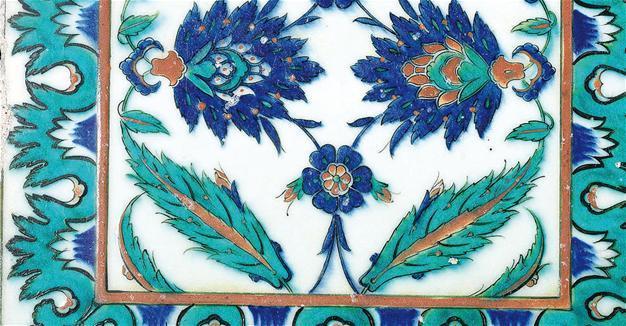Rare İznik tile a highlight of Bonhams art sale
ISTANBUL

As part of an extensive array of antiquities from India and the Islamic world, Bonhams has announced a fine and rare İznik pottery tile as one of the highlights of its upcoming sale to be held in London on Oct. 18.
Estimated at 25,000-35,000 pounds, the tile is part of an impressive selection of antique tiles from İznik, Kashan and other major pottery centers in the Islamic world that will be on sale.
The İznik pottery was produced in the Western Anatolian town of İznik between the closing decades of the 15th century and the end of the 17th century, the height of the golden age of İznik pottery.
İznik was already an established center for the production of simple, domestic, earthenware pottery when craftsmen, responding to demand from the Ottoman Court, began to make high quality stone paste objects in the 15th century. These were initially decorated with traditional arabesque patterns combined with design elements taken from Chinese blue and white porcelain.
Throughout the 16th century İznik pottery flourished, reaching its artistic peak between 1560 and 1600. Designs became more fluid and less symmetrical; the color palette gradually changed, incorporating pastel shades of turquoise, sage green and pale purple.
By the end of the century, bolder colors had been introduced, with strong red and bright emerald green becoming standard. A series of catastrophic fires, combined with an economic slump across the Ottoman Empire, badly affected production and demand at the beginning of the 17th century.
By the time the economy recovered, İznik’s main rival, Kütahya, had forged ahead. Pottery continued to be made at İznik, but the standard of workmanship was poor and the designs poorer. By 1800, production had ceased entirely.
 As part of an extensive array of antiquities from India and the Islamic world, Bonhams has announced a fine and rare İznik pottery tile as one of the highlights of its upcoming sale to be held in London on Oct. 18.
As part of an extensive array of antiquities from India and the Islamic world, Bonhams has announced a fine and rare İznik pottery tile as one of the highlights of its upcoming sale to be held in London on Oct. 18.